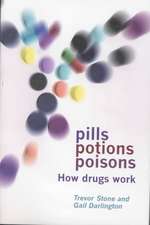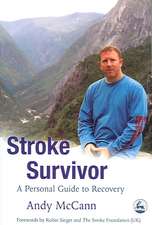Diabesity: A Doctor and Her Patients on the Front Lines of the Obesity-Diabetes Epidemic
Autor MD Kaufman, Francine R.en Limba Engleză Paperback – 31 dec 2005
To enter Dr. Francine Kaufman’s clinic is to see the future of America: a 220-pound twelve-year-old boy…a 267-pound thirteen-year-old girl…their concerned but equally overweight parents…the human faces and human suffering behind the epidemic of type 2 diabetes that threatens to overwhelm our health care system. Once a disease of the elderly, type 2 diabetes now strikes adults in their prime–and, increasingly, children. It has nearly doubled in the last decade. The cause? Our soaring rates of obesity.
Diabesity takes us to the front lines of the fight against this preventable but deadly disease. Through vivid patient stories, it explains how excess weight destroys the body’s ability to process sugar properly–with life-threatening consequences. It shows what happens when the genes that evolved to protect us from famine collide with a sedentary lifestyle that has put bacon cheeseburgers on every corner. And it demonstrates why our usual blame-the-victim response is futile in face of the complex, worldwide forces behind this epidemic.
Detailing the tools for change at every level–from families to school systems to government–and reporting on innovative programs that are already making a difference, Diabesity offers a compelling action plan for winning this battle.
From the Hardcover edition.
Preț: 122.23 lei
Nou
Puncte Express: 183
Preț estimativ în valută:
23.39€ • 24.33$ • 19.31£
23.39€ • 24.33$ • 19.31£
Carte disponibilă
Livrare economică 24 martie-07 aprilie
Preluare comenzi: 021 569.72.76
Specificații
ISBN-13: 9780553383799
ISBN-10: 0553383795
Pagini: 325
Dimensiuni: 152 x 226 x 18 mm
Greutate: 0.46 kg
Editura: Bantam Books
ISBN-10: 0553383795
Pagini: 325
Dimensiuni: 152 x 226 x 18 mm
Greutate: 0.46 kg
Editura: Bantam Books
Recenzii
“Incredibly important . . . Francine Kaufman will save lives”
--Wolf Blitzer, CNN anchor
“A dramatic, personal account of the human dimensions of the modern obesity epidemic.”
--Greg Critser, author of Fat Land: How Americans Became the Fattest People in the World
“No person is better suited than Francine Kaufman to write a groundbreaking book on obesity and diabetes. This book is a gem for coupling insightful analysis with creative recommendations for what might be done."
--Kelly D. Brownell, Ph.D., Director, Yale Center for Eating and Weight Disorders, and author of Food Fight
“Francine Kaufman is a warrior. Her enemies are type-2 diabetes and obesity, preventable conditions that menace our nation’s health. In this inspiring book, she leads us toward solutions."
--Miriam Nelson, Ph.D., author of Strong Women Stay Young and Strong Women Stay Slim
“Francine Kaufman writes with clarity and compassion, blending cutting-edge science with the stories of those affected. She makes a compelling case for change as individuals and as a society.”
--David S. Ludwig, M.D., Ph.D., Director, Obesity Program, Children’s Hospital Boston
“Parents today are unwittingly leading their children into a dietary danger zone. Dr. Kaufman’s wise book lays out a clear path guiding families back to safety.”
--Harvey Karp, M.D., author of The Happiest Baby on the Block and The Happiest Toddler on the Block
“A compelling combination of medical insight, practical treatment strategies, and Fran Kaufman’s special passion for ways to prevent this devastating epidemic.”
--James R. Gavin III, M.D., Ph.D., President, Morehouse School of Medicine; Chair, National Diabetes Education Program
“As obesity and diabetes emerge as the leading public health threats of the 21st century, Dr. Kaufman’s book becomes required reading.”
--Congresswoman Hilda L. Solis
"[A] first-rate, important book.... a call to arms for policy makers and those in the health-care industry."--Publishers Weekly
From the Hardcover edition.
--Wolf Blitzer, CNN anchor
“A dramatic, personal account of the human dimensions of the modern obesity epidemic.”
--Greg Critser, author of Fat Land: How Americans Became the Fattest People in the World
“No person is better suited than Francine Kaufman to write a groundbreaking book on obesity and diabetes. This book is a gem for coupling insightful analysis with creative recommendations for what might be done."
--Kelly D. Brownell, Ph.D., Director, Yale Center for Eating and Weight Disorders, and author of Food Fight
“Francine Kaufman is a warrior. Her enemies are type-2 diabetes and obesity, preventable conditions that menace our nation’s health. In this inspiring book, she leads us toward solutions."
--Miriam Nelson, Ph.D., author of Strong Women Stay Young and Strong Women Stay Slim
“Francine Kaufman writes with clarity and compassion, blending cutting-edge science with the stories of those affected. She makes a compelling case for change as individuals and as a society.”
--David S. Ludwig, M.D., Ph.D., Director, Obesity Program, Children’s Hospital Boston
“Parents today are unwittingly leading their children into a dietary danger zone. Dr. Kaufman’s wise book lays out a clear path guiding families back to safety.”
--Harvey Karp, M.D., author of The Happiest Baby on the Block and The Happiest Toddler on the Block
“A compelling combination of medical insight, practical treatment strategies, and Fran Kaufman’s special passion for ways to prevent this devastating epidemic.”
--James R. Gavin III, M.D., Ph.D., President, Morehouse School of Medicine; Chair, National Diabetes Education Program
“As obesity and diabetes emerge as the leading public health threats of the 21st century, Dr. Kaufman’s book becomes required reading.”
--Congresswoman Hilda L. Solis
"[A] first-rate, important book.... a call to arms for policy makers and those in the health-care industry."--Publishers Weekly
From the Hardcover edition.
Notă biografică
Francine R. Kaufman, M.D. is an internationally-known authority on diabetes and obesity. The immediate past-president of the American Diabetes Association (2002-2003 term), she is Head, Center for Diabetes, Endocrinology and Metabolism at Childrens Hospital Los Angeles, and Professor of Pediatrics at the Keck School of Medicine, University of Southern California. The author of more than 150 medical articles, she has developed many important clinical innovations and is also a tireless public advocate. She has developed innovative programs for overweight and diabetic children and their families, served for more than twenty years as medical director of a summer camp for diabetic children, and was instrumental in banning the sale of soda in the LA Unified School District. Her many honors include the 2003 Woman of Valor Award from the American Diabetes Association. She lives in Los Angeles with her husband, Neal Kaufman, M.D., M.P.H., and is the mother of two sons, Adam and Jonah.
From the Hardcover edition.
From the Hardcover edition.
Extras
ONE
A Tale of Two Children
The blaring telephone woke me from the already fitful sleep of a night on call. I struggled desperately to lift my mind from semiconsciousness. The year was 1981; the time was 1:30 a.m. At that hour, a ringing phone meant a critically ill child.
I'm a pediatric endocrinologist. Since 1978 I have cared for youngsters with diabetes. I've also worked with adults with this dread disease, as a researcher, teacher, and advocate. In 2002, I was elected president of the American Diabetes Association.
Many people today think of diabetes as a slow-moving chronic disease. But it can be swift and merciless, particularly when it attacks young children. An abnormally high blood sugar level, the hallmark of diabetes, is always a medical emergency. In my early years as a doctor, first as an intern and then as a resident, I spent every third night on call, ready to go into battle against diabetes. The telephone call on that night in 1981 came from the emergency department resident. He told me that a nine-month-old baby named Cameron had been rushed to Children’s Hospital Los Angeles in a coma. Cameron's blood sugar was ten times higher than normal. No one in the emergency department had ever seen such a high number. By the time the resident finished his terse description, I was on my feet, fully awake.
I had recently completed my fellowship in pediatric endocrinology, the specialized training that follows residency, and I'd joined the staff at Children’s Hospital, where I now head the Center for Diabetes, Endocrinology and Metabolism. My husband, Neal, who was also establishing a medical career, was out of town at a professional meeting. We had two young children: Adam, age three, and Jonah, who was almost one. Our babysitter had quit that afternoon, and I'd spent most of the evening patching together child care arrangements for the coming week. I'd fallen into bed at midnight, even more exhausted than usual.
A close friend had promised to babysit if I needed to go to the hospital in the middle of the night, but time was too short. Cameron was already unconscious. If his blood sugar wasn't brought down to a normal level in just the right way, he might not survive the night. I ran to the kitchen with a tote bag and grabbed a plastic bottle of juice for Jonah and other supplies. Then I carried both boys to the car and fastened them into their car seats, trying not to awaken them. I drove with dread anticipation to the hospital.
Cameron was my first concern, but I also had to find some secure spot for my children. Carrying one sleeping child in each arm, I entered ER Room 2. This is the room nearest to the ambulance bay. It's larger than the other ER rooms, with special equipment and extra space so more people can fit. You're brought to Room 2 when you're in real trouble. The resident brushed past me; he was rushing a blood sample to the lab. Cameron lay on the bed, naked, his tiny body pale and motionless. Hovering over him were two of the ER interns, a respiratory nurse, and Esther, the ER's senior nurse. Around them, machines beeped and monitors flashed. An IV dripped fluid into Cameron's limp body.
Cameron was so thin I could count every rib. His lips were dry; his eyes were sunken in his head and tearless--all obvious signs of dehydration. Despite the lack of fluid in his body, the sheet under him was soaked, indicating he was urinating copiously because of his diabetes. His breathing was deep and labored. I could smell a fruity odor on his breath, another sign of his disease.
Even though his appearance was what I had expected, I was still shocked to see such a gravely ill infant. His mother--slender, young, and alone--sat in a corner of Room 2. She looked overwhelmed by the commotion surrounding her child. Holding my own two children in my arms, I ran to Cameron's mother and introduced myself as Dr. Kaufman, the diabetes specialist. Then I motioned to Esther to step into the hall. "I'm going to need some help with my boys," I told her.
Esther shook her head. "We're already short of staff," she said. "I can't spare anyone for babysitting. Put them on those armchairs"--she pointed to two chairs in the hallway--"so you can keep an eye on them." Esther slid the chairs to face each other, forming a makeshift crib.
Adam curled up on his chair without awakening. But when I put Jonah on the chair facing Adam, he began to whimper. I dug the plastic bottle out of the tote bag. Jonah grabbed it and flung it across the hall. Juice sprayed out like a fountain. Now he was crying inconsolably. I knew that if he awakened Adam I'd be sunk. So I lifted him up and held him against my shoulder. As soon as he quieted, I hurried back into Room 2 and began to examine Cameron.
Carrying my own son with my left arm, I poked Cameron's abdomen with the fingers of my right hand. He didn't flinch, which told me he was deeply unconscious. When I removed my fingertips, little white circles remained on his skin, indicating extremely poor circulation. Cameron's mother stared, no doubt startled by the sight of a doctor at work while holding her own baby.
SUGAR TURNS TOXIC
Diabetes can devastate nearly every system of the body, but it all starts with the metabolism of glucose, a type of sugar. Glucose is what fuels our every move and our every thought. The glucose we need comes from the food we eat. But our body can't use it without insulin, a hormone produced by the pancreas. As I'll explain shortly, diabetes comes in different forms. In all of them, insulin is unable to play its proper role.
Because Cameron had lost the ability to process sugar, his cells were starving. That's why he was so thin. Meanwhile, sugar had accumulated to toxic levels in his blood--a condition called hyperglycemia. His body was drawing water from his tissues, trying to flush out the excess sugar in his urine. That's why he was urinating excessively. And because so much water was leaving his body, he had become severely dehydrated. Desperate for calories, he had begun burning stored fat. The fruity aroma of his breath came from ketones, a by-product of his abnormal metabolism. The ketones were making Cameron's blood dangerously acidic. Despite his body's attempt to blow these acids out with his breath, he could not exhale them fast enough. This condition, called diabetic ketoacidosis, can lead to coma and even death.
To bring Cameron back to life, he would need infusions of insulin, as well as salts and fluids to counter the effects of dehydration and ketoacidosis. Balancing these inputs is crucial and never easy. But it's especially tricky with a tiny infant. Intravenous fluid was essential, but fluid with the wrong salt concentration or excess fluid--or in some cases even the right amount of fluid--could cause fatal swelling of the brain.
The resident burst in from the lab with the test results. "The first blood sugar was 1,050 milligrams per deciliter; the repeat is down to 953," he told me. A normal sugar level for an infant is no higher than 110 milligrams per deciliter (mg/dl). Back then, in 1981, we could measure blood sugar in the ER with a drop of blood and a glucose strip. But the strips in the ER didn't register if the level was that high, so Cameron's blood had been checked in the hospital laboratory. "I didn't think someone could be alive with blood sugar at that level," the resident whispered, not wanting Cameron's mother to hear.
I told Esther what fluids Cameron needed and at what rate they had to be given. Jonah lifted his head from my shoulder and began to whimper. I ordered more blood tests to assess Cameron's body chemistry. Jonah was crying now. I rocked back and forth, trying to soothe him as I struggled to calculate how much insulin to put into Cameron's intravenous infusion. By the time I gave Esther the order, Jonah was screaming.
Cameron's mother was watching all this, visibly nervous. Finally she approached and said to me, "Dr. Kaufman--that's your name, right?"
"Yes," I responded. My child was crying hysterically, but I spoke as calmly as I could, trying to look as if I had the situation under control. Cameron's mother knew her son's life was in danger. She was terrified and exhausted and I wanted desperately to reassure her. But Jonah was inconsolable. I felt frustrated and embarrassed.
"I'll tell you what," she said. "I'll hold your child if you'll save mine."
We were two mothers. Our eyes met, and a look of understanding instantly passed between us. I transferred my baby to her, just as she had given hers to me. She took my son and held him tight. He quieted down. She rocked him, ran his blanket gently across his cheek, and hummed to him. Tears streamed down her face. Within minutes, my son was asleep in her arms.
Shortly after 6:00 a.m., Cameron's eyes opened. He took in the unfamiliar surroundings and the hovering strangers in white coats. Then he opened his mouth and screamed--the first sound he'd made through this terrifying night, other than his labored breathing. Cameron's mother lifted her head. We smiled at each other. Even Esther, whose face had been set in a worried frown, grinned with delight. Cameron had made it back from the abyss; he had recovered from diabetic ketoacidosis. Now he faced the rest of his life with diabetes. But as I told his mother, with scrupulously careful management of his disease, that life could be a long and healthy one.
TYPE 1 VERSUS TYPE 2
Diabetes takes two forms. Cameron suffered from type 1. His immune system had destroyed the beta cells in his pancreas, the cells that produce insulin, so he was unable to make this essential hormone. Type 1 diabetes typically appears in childhood and progresses rapidly. Fortunately, type 1 is relatively rare. Ninety percent of people with diabetes have the other kind, which is known as type 2. In type 2 diabetes, the key problem is not that insulin is lacking; rather, the body's cells don't respond normally to it. As with type 1, the cells go hungry while, paradoxically, glucose accumulates in the blood.
When I was in medical school in the 1970s, we were taught that type 2 diabetes was a disease of aging. It usually comes on gradually, typically making its appearance after age fifty. Over time, cells throughout the body become less sensitive to insulin, and the pancreas compensates by producing more. After a while, the pancreas is no longer able to manufacture this excessive amount of insulin, and the blood sugar level rises.
No one could ignore for long the dramatic symptoms of type 1 diabetes. Until insulin treatment became available in 1922, people with this disease typically died within months of diagnosis. But the signs of type 2 diabetes can be hard to spot: fatigue, frequent urination, slower healing of sores. In fact, the symptoms are so subtle that almost a third of those with this form of diabetes have no idea they have the disease. If they're lucky, they'll discover it during a routine physical examination. But some people first learn they have diabetes when they develop complications: suddenly their vision is blurred, or they're felled by a heart attack or stroke.
There's another important difference between the two forms of diabetes. Though we can treat type 1, we can't cure it and we don't yet know how to prevent it. But type 2 is different, because it's strongly associated with excess weight. Simply by maintaining a healthy weight, people can significantly cut their risk of developing this terrible disease. What's more, they can even cure it at its early stages if they achieve and maintain a normal weight.
Though the vast majority of adult diabetes cases are type 2, the reverse is true in children. In fact, during my first fifteen years as a pediatric endocrinologist, I never saw a young patient with type 2 diabetes. But then everything changed.
"I CAN'T FIGURE OUT WHY SHE STILL LOOKS SO GOOD"
In the middle of a spring day in 1995, I received a call from an emergency department doctor, asking if I could see a thirteen-year-old patient named Tanesha and her family right away. Tanesha's blood sugar level was 427 mg/dl, at least four times higher than normal for a young teen.
I was in my office at the hospital, and my appointment schedule was solidly booked. The waiting room and all the examining rooms were filled with patients and parents. But that didn't matter. I had to see Tanesha immediately because of her alarmingly high blood sugar. Hearing the number, I pictured a typical type 1 patient referred from the emergency department: thin and severely weakened by dehydration, nausea, and fatigue--maybe even comatose, like Cameron. But I soon learned that Tanesha didn't fit that picture.
"Tanesha has been hyperglycemic for at least two weeks," the ER doctor told me. "I can't figure out why she still looks so good. And you won't believe how big this girl is. She's the fattest kid with diabetes I've ever seen." Despite her elevated blood sugar, Tanesha was barely symptomatic. She didn't feel weak or exhausted; she hadn't vomited. Instead, she was hungry. While Tanesha waited in the ER, she'd eaten a bag of fries and downed a can of soda. "By the way," the doctor added, "Tanesha is African American." This too was puzzling. Type 1 diabetes is rarer in non-white children.
Even though I'd been told that Tanesha was overweight, and even though she was not sick after a long bout of hyperglycemia, it didn't dawn on me that she might have type 2 diabetes. Not in 1995. Only when I walked into the examining room did it become apparent that my thinking was all wrong. Tanesha was there with her mother and her grandmother, who was in a wheelchair. Each of them weighed at least 250 pounds. I realized that I might be walking into a whole new world. I felt scared and shocked.
Two weeks earlier, during a routine health evaluation at a pediatric clinic in Los Angeles, Tanesha's urine test had revealed a high level of sugar. Despite the fact that large amounts of sugar in the urine require immediate attention, Tanesha was not called back for a confirmatory blood test for ten days. When she returned, her blood sugar level was 443 mg/dl. Though this pointed to a potentially dangerous situation, it was another two days before Tanesha arrived at the Children’s Hospital's emergency department.
I had visited that underfunded and understaffed pediatric clinic in downtown Los Angeles. The doctors who worked there were dedicated. But they were overwhelmed by enormous caseloads and the catastrophic health problems that poverty brings. It was easy to understand why no one had considered Tanesha's situation urgent--after all, she didn't seem sick. But I was pained by the knowledge that if she had been an affluent suburban child, it most likely wouldn't have taken nearly two weeks for her to receive appropriate medical attention.
From the Hardcover edition.
A Tale of Two Children
The blaring telephone woke me from the already fitful sleep of a night on call. I struggled desperately to lift my mind from semiconsciousness. The year was 1981; the time was 1:30 a.m. At that hour, a ringing phone meant a critically ill child.
I'm a pediatric endocrinologist. Since 1978 I have cared for youngsters with diabetes. I've also worked with adults with this dread disease, as a researcher, teacher, and advocate. In 2002, I was elected president of the American Diabetes Association.
Many people today think of diabetes as a slow-moving chronic disease. But it can be swift and merciless, particularly when it attacks young children. An abnormally high blood sugar level, the hallmark of diabetes, is always a medical emergency. In my early years as a doctor, first as an intern and then as a resident, I spent every third night on call, ready to go into battle against diabetes. The telephone call on that night in 1981 came from the emergency department resident. He told me that a nine-month-old baby named Cameron had been rushed to Children’s Hospital Los Angeles in a coma. Cameron's blood sugar was ten times higher than normal. No one in the emergency department had ever seen such a high number. By the time the resident finished his terse description, I was on my feet, fully awake.
I had recently completed my fellowship in pediatric endocrinology, the specialized training that follows residency, and I'd joined the staff at Children’s Hospital, where I now head the Center for Diabetes, Endocrinology and Metabolism. My husband, Neal, who was also establishing a medical career, was out of town at a professional meeting. We had two young children: Adam, age three, and Jonah, who was almost one. Our babysitter had quit that afternoon, and I'd spent most of the evening patching together child care arrangements for the coming week. I'd fallen into bed at midnight, even more exhausted than usual.
A close friend had promised to babysit if I needed to go to the hospital in the middle of the night, but time was too short. Cameron was already unconscious. If his blood sugar wasn't brought down to a normal level in just the right way, he might not survive the night. I ran to the kitchen with a tote bag and grabbed a plastic bottle of juice for Jonah and other supplies. Then I carried both boys to the car and fastened them into their car seats, trying not to awaken them. I drove with dread anticipation to the hospital.
Cameron was my first concern, but I also had to find some secure spot for my children. Carrying one sleeping child in each arm, I entered ER Room 2. This is the room nearest to the ambulance bay. It's larger than the other ER rooms, with special equipment and extra space so more people can fit. You're brought to Room 2 when you're in real trouble. The resident brushed past me; he was rushing a blood sample to the lab. Cameron lay on the bed, naked, his tiny body pale and motionless. Hovering over him were two of the ER interns, a respiratory nurse, and Esther, the ER's senior nurse. Around them, machines beeped and monitors flashed. An IV dripped fluid into Cameron's limp body.
Cameron was so thin I could count every rib. His lips were dry; his eyes were sunken in his head and tearless--all obvious signs of dehydration. Despite the lack of fluid in his body, the sheet under him was soaked, indicating he was urinating copiously because of his diabetes. His breathing was deep and labored. I could smell a fruity odor on his breath, another sign of his disease.
Even though his appearance was what I had expected, I was still shocked to see such a gravely ill infant. His mother--slender, young, and alone--sat in a corner of Room 2. She looked overwhelmed by the commotion surrounding her child. Holding my own two children in my arms, I ran to Cameron's mother and introduced myself as Dr. Kaufman, the diabetes specialist. Then I motioned to Esther to step into the hall. "I'm going to need some help with my boys," I told her.
Esther shook her head. "We're already short of staff," she said. "I can't spare anyone for babysitting. Put them on those armchairs"--she pointed to two chairs in the hallway--"so you can keep an eye on them." Esther slid the chairs to face each other, forming a makeshift crib.
Adam curled up on his chair without awakening. But when I put Jonah on the chair facing Adam, he began to whimper. I dug the plastic bottle out of the tote bag. Jonah grabbed it and flung it across the hall. Juice sprayed out like a fountain. Now he was crying inconsolably. I knew that if he awakened Adam I'd be sunk. So I lifted him up and held him against my shoulder. As soon as he quieted, I hurried back into Room 2 and began to examine Cameron.
Carrying my own son with my left arm, I poked Cameron's abdomen with the fingers of my right hand. He didn't flinch, which told me he was deeply unconscious. When I removed my fingertips, little white circles remained on his skin, indicating extremely poor circulation. Cameron's mother stared, no doubt startled by the sight of a doctor at work while holding her own baby.
SUGAR TURNS TOXIC
Diabetes can devastate nearly every system of the body, but it all starts with the metabolism of glucose, a type of sugar. Glucose is what fuels our every move and our every thought. The glucose we need comes from the food we eat. But our body can't use it without insulin, a hormone produced by the pancreas. As I'll explain shortly, diabetes comes in different forms. In all of them, insulin is unable to play its proper role.
Because Cameron had lost the ability to process sugar, his cells were starving. That's why he was so thin. Meanwhile, sugar had accumulated to toxic levels in his blood--a condition called hyperglycemia. His body was drawing water from his tissues, trying to flush out the excess sugar in his urine. That's why he was urinating excessively. And because so much water was leaving his body, he had become severely dehydrated. Desperate for calories, he had begun burning stored fat. The fruity aroma of his breath came from ketones, a by-product of his abnormal metabolism. The ketones were making Cameron's blood dangerously acidic. Despite his body's attempt to blow these acids out with his breath, he could not exhale them fast enough. This condition, called diabetic ketoacidosis, can lead to coma and even death.
To bring Cameron back to life, he would need infusions of insulin, as well as salts and fluids to counter the effects of dehydration and ketoacidosis. Balancing these inputs is crucial and never easy. But it's especially tricky with a tiny infant. Intravenous fluid was essential, but fluid with the wrong salt concentration or excess fluid--or in some cases even the right amount of fluid--could cause fatal swelling of the brain.
The resident burst in from the lab with the test results. "The first blood sugar was 1,050 milligrams per deciliter; the repeat is down to 953," he told me. A normal sugar level for an infant is no higher than 110 milligrams per deciliter (mg/dl). Back then, in 1981, we could measure blood sugar in the ER with a drop of blood and a glucose strip. But the strips in the ER didn't register if the level was that high, so Cameron's blood had been checked in the hospital laboratory. "I didn't think someone could be alive with blood sugar at that level," the resident whispered, not wanting Cameron's mother to hear.
I told Esther what fluids Cameron needed and at what rate they had to be given. Jonah lifted his head from my shoulder and began to whimper. I ordered more blood tests to assess Cameron's body chemistry. Jonah was crying now. I rocked back and forth, trying to soothe him as I struggled to calculate how much insulin to put into Cameron's intravenous infusion. By the time I gave Esther the order, Jonah was screaming.
Cameron's mother was watching all this, visibly nervous. Finally she approached and said to me, "Dr. Kaufman--that's your name, right?"
"Yes," I responded. My child was crying hysterically, but I spoke as calmly as I could, trying to look as if I had the situation under control. Cameron's mother knew her son's life was in danger. She was terrified and exhausted and I wanted desperately to reassure her. But Jonah was inconsolable. I felt frustrated and embarrassed.
"I'll tell you what," she said. "I'll hold your child if you'll save mine."
We were two mothers. Our eyes met, and a look of understanding instantly passed between us. I transferred my baby to her, just as she had given hers to me. She took my son and held him tight. He quieted down. She rocked him, ran his blanket gently across his cheek, and hummed to him. Tears streamed down her face. Within minutes, my son was asleep in her arms.
Shortly after 6:00 a.m., Cameron's eyes opened. He took in the unfamiliar surroundings and the hovering strangers in white coats. Then he opened his mouth and screamed--the first sound he'd made through this terrifying night, other than his labored breathing. Cameron's mother lifted her head. We smiled at each other. Even Esther, whose face had been set in a worried frown, grinned with delight. Cameron had made it back from the abyss; he had recovered from diabetic ketoacidosis. Now he faced the rest of his life with diabetes. But as I told his mother, with scrupulously careful management of his disease, that life could be a long and healthy one.
TYPE 1 VERSUS TYPE 2
Diabetes takes two forms. Cameron suffered from type 1. His immune system had destroyed the beta cells in his pancreas, the cells that produce insulin, so he was unable to make this essential hormone. Type 1 diabetes typically appears in childhood and progresses rapidly. Fortunately, type 1 is relatively rare. Ninety percent of people with diabetes have the other kind, which is known as type 2. In type 2 diabetes, the key problem is not that insulin is lacking; rather, the body's cells don't respond normally to it. As with type 1, the cells go hungry while, paradoxically, glucose accumulates in the blood.
When I was in medical school in the 1970s, we were taught that type 2 diabetes was a disease of aging. It usually comes on gradually, typically making its appearance after age fifty. Over time, cells throughout the body become less sensitive to insulin, and the pancreas compensates by producing more. After a while, the pancreas is no longer able to manufacture this excessive amount of insulin, and the blood sugar level rises.
No one could ignore for long the dramatic symptoms of type 1 diabetes. Until insulin treatment became available in 1922, people with this disease typically died within months of diagnosis. But the signs of type 2 diabetes can be hard to spot: fatigue, frequent urination, slower healing of sores. In fact, the symptoms are so subtle that almost a third of those with this form of diabetes have no idea they have the disease. If they're lucky, they'll discover it during a routine physical examination. But some people first learn they have diabetes when they develop complications: suddenly their vision is blurred, or they're felled by a heart attack or stroke.
There's another important difference between the two forms of diabetes. Though we can treat type 1, we can't cure it and we don't yet know how to prevent it. But type 2 is different, because it's strongly associated with excess weight. Simply by maintaining a healthy weight, people can significantly cut their risk of developing this terrible disease. What's more, they can even cure it at its early stages if they achieve and maintain a normal weight.
Though the vast majority of adult diabetes cases are type 2, the reverse is true in children. In fact, during my first fifteen years as a pediatric endocrinologist, I never saw a young patient with type 2 diabetes. But then everything changed.
"I CAN'T FIGURE OUT WHY SHE STILL LOOKS SO GOOD"
In the middle of a spring day in 1995, I received a call from an emergency department doctor, asking if I could see a thirteen-year-old patient named Tanesha and her family right away. Tanesha's blood sugar level was 427 mg/dl, at least four times higher than normal for a young teen.
I was in my office at the hospital, and my appointment schedule was solidly booked. The waiting room and all the examining rooms were filled with patients and parents. But that didn't matter. I had to see Tanesha immediately because of her alarmingly high blood sugar. Hearing the number, I pictured a typical type 1 patient referred from the emergency department: thin and severely weakened by dehydration, nausea, and fatigue--maybe even comatose, like Cameron. But I soon learned that Tanesha didn't fit that picture.
"Tanesha has been hyperglycemic for at least two weeks," the ER doctor told me. "I can't figure out why she still looks so good. And you won't believe how big this girl is. She's the fattest kid with diabetes I've ever seen." Despite her elevated blood sugar, Tanesha was barely symptomatic. She didn't feel weak or exhausted; she hadn't vomited. Instead, she was hungry. While Tanesha waited in the ER, she'd eaten a bag of fries and downed a can of soda. "By the way," the doctor added, "Tanesha is African American." This too was puzzling. Type 1 diabetes is rarer in non-white children.
Even though I'd been told that Tanesha was overweight, and even though she was not sick after a long bout of hyperglycemia, it didn't dawn on me that she might have type 2 diabetes. Not in 1995. Only when I walked into the examining room did it become apparent that my thinking was all wrong. Tanesha was there with her mother and her grandmother, who was in a wheelchair. Each of them weighed at least 250 pounds. I realized that I might be walking into a whole new world. I felt scared and shocked.
Two weeks earlier, during a routine health evaluation at a pediatric clinic in Los Angeles, Tanesha's urine test had revealed a high level of sugar. Despite the fact that large amounts of sugar in the urine require immediate attention, Tanesha was not called back for a confirmatory blood test for ten days. When she returned, her blood sugar level was 443 mg/dl. Though this pointed to a potentially dangerous situation, it was another two days before Tanesha arrived at the Children’s Hospital's emergency department.
I had visited that underfunded and understaffed pediatric clinic in downtown Los Angeles. The doctors who worked there were dedicated. But they were overwhelmed by enormous caseloads and the catastrophic health problems that poverty brings. It was easy to understand why no one had considered Tanesha's situation urgent--after all, she didn't seem sick. But I was pained by the knowledge that if she had been an affluent suburban child, it most likely wouldn't have taken nearly two weeks for her to receive appropriate medical attention.
From the Hardcover edition.
Descriere
Francine Kaufman takes readers to the front lines of the fight against this deadly, but preventable disease. Vivid patient stories explain how excess weight destroys the body's ability to process sugar properly--with life-threatening consequences.












